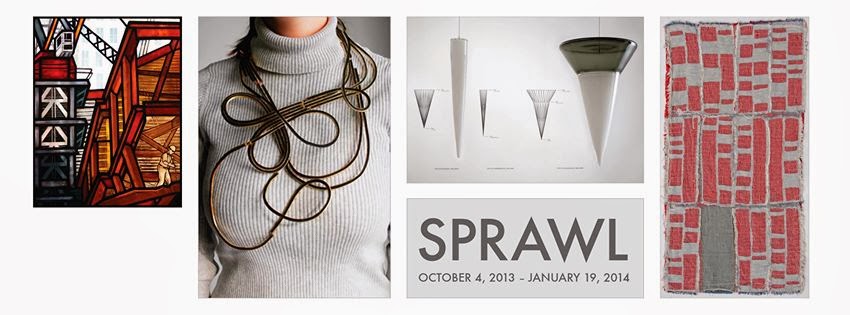Lately my work studio has been filled with graphs, maps and molecular structures. Perhaps I'm crazy, but I think I've found a way to connect all of these seemingly disparate subjects into a new series.
 |
| A work wall in March. |
I'm in the process of creating a contemporary quilt pattern language. One that reflects our current society's issues. For years, we've replicated the 'wagon wheel' and 'jacob's ladder' patterns in more traditional quilts. And as I've learned from my past series, they can effectively used to record history and even offer new knowledge to viewers who were previously unaware. These traditional patterns are certainly beautiful but why not attempt a new pattern language for today? I was inspired when I read about the myth of the Underground Railroad quilts. If it were true, what a brilliant idea! So, why don't we utilize patterns to talk about what we're dealing with today? Issues like climate change, the digital era, migration, water and food security, etc. There are certainly plenty of artists addressing these issues but I haven't found anyone who has created something that could be used by others to generate new pieces and new ideas. So I'm setting out to create a body of work to start the conversation.
 |
| Pages from the fabric book with conceptual wall pieces sketched below. |
To kick off the series, I wanted to create some sort of book to reflect these new ideas. A lot of us know and love Louise Bourgeois' fabric books. What better way to pull of these ideas together into a cohesive form? It allows me to work out the fabric construction while exhibiting the patterns. I'm only using black and white at this point to really focus on the graphic design of the pattern making.
 |
This pattern is about migration, the pattern was
inpired by looking at my daughter's flip flops one day. |
The patterns in the book act as a starting point to generate larger pieces. There are so many ways to use a pattern: altering scale, color and fabric. It's endless. Based on the patterns, I will create a series of large wall and floor pieces that are just one interpretation of the ideas.

The stories about these patterns are still evolving and the wall pieces will reflect this. They will be presented using relevant visual mapping, statistical information and structuring, whatever the subject calls for. For example, below and above is a piece about Colony Collapse Disorder occuring in the bee population worldwide. If we don't resolve this problem soon, our bee population will dwindle to the point of not being able to pollinate our crops and hence, grow our food. I'm simply laying out the molecular structure of the current causes of CCD, a series of pesticides called Neonicotinoids overlaid on top of the natural structure created by bees, the hexagon. Curious how visually related they are, isn't it?
I suspect this project will keep me busy for at least a year. I'll delve into each of these patterns as I develop them. The possibilities are endless.





























